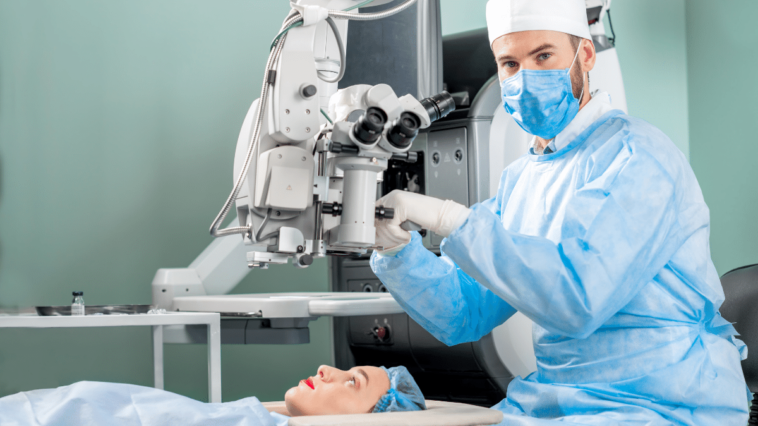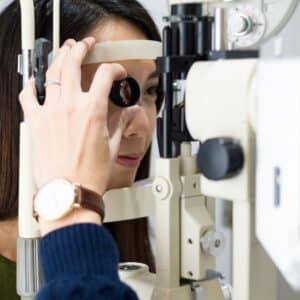PRK Surgery or Photorefractive Keratectomy is a surgical procedure where the cornea’s surface is reshaped using an excimer laser. It is a procedure that only removes between 5 and 10% of the thickness of the cornea and generally for mild to moderate nearsightedness (myopia).
It is particularly suited for larger pupils, thin corneas, and dry eyes where the traditional laser surgery might not be suitable. The procedure does not require the patient to be anesthetized, but anesthetic drops are applied to the eye to numb it, and a device to keep the lids apart is applied. The corneal cells are removed by an eye surgeon, followed by the laser procedure. PRK surgery is suitable for nearsightedness, farsightedness, and astigmatism and is carried out with computer precision.
The procedure does not take long, and for most patients, it will only take about 1 minute. Once the PRK surgery is complete, a temporary contact lens is used as a bandage for extra comfort and protection.
PRK Recovery Time
The recovery starts once the contact lenses are placed on the operated eye and worn by the patient for up to 5 days. With PRK surgery, you will need to visit the surgeon several times during the first month after the surgery, and the first appointment is usually made the day after the surgery. When the surface epithelium is healed, the contact lens is removed. At this time, the vision might still be blurred, but it will gradually improve.
The typical recovery periods are that you will be able to drive a car within the first two weeks, but you will only have the best-corrected vision after about three months. Even though PRK surgery recovery is slower than LASIK surgery after six months, results have shown that the eyesight is approximately the same with both procedures.
PRK Surgery Side Effects
PRK surgery does not have a corneal flap using a microkeratome, and therefore the cornea protective layers must heal post the operation. One of the most common side effects is the complications of scarring, and that the healing of the cornea is very unpredictable.
Added side effects are infection, but these are very rare as they are with LASIK surgery. PRK surgery is preferred where the patients have large pupils and thin corneas because of the complications of flap creation and halos and starbursts’ potential.
Should I use PRK Surgery?
PRK surgery is particularly suited to people with thin corneas and if there are any other corneal circumstances. The best would be to visit an eye specialist or doctor to get expert advice on which type of procedure to choose, LASIK, or PRK.
A person also needs to weigh up the advantages of the additional costs of having PRK surgery. Because it uses extra technology, the prices are generally higher than LASIK surgery, but if you do have eye conditions that would be better to have PRK surgery that would be the option to take. After all, quality of life also includes how well our senses are, especially eyesight.






